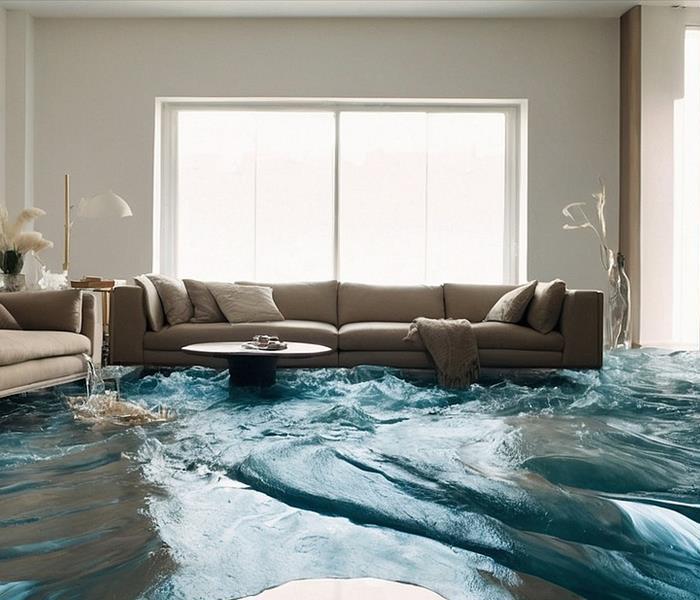Recent Posts
What To Do When You Have Water Damage
5/9/2024 (Permalink)
Water damage can wreak havoc on your home or property. Water damage can occur from burst pipes, leaking roofs, storms, floods, and hurricanes. The consequences can be devastating, leading to structural damage, mold growth, and potential health hazards.
When facing these situations, it is best to contact a restoration company such as SERVPRO®. However, here are some simple actions you can take while you wait on a SERVPRO team to arrive at your home.
Turn off the Power
Attempt to safely switch off the electricity and gas to avoid electrocution and gas leaks. If unable to do so due to an extensive amount of water in the home, wait for a SERVPRO team to arrive and cut the power off.
Locate and Stop the Water Source
Identify where the water is coming from. If it is coming from a burst pipe or leaking appliance, turn off the water supply to prevent further flooding.
If the source of the water is external, such as a storm or flooding, do your best to divert or contain the water from further damaging your home and furniture.
Remove Excess Water
Use pumps, wet/dry vacuums, buckets, or towels to remove as much water as possible from the affected area. The faster you can extract the water, the better chance you have of preventing further damage and mold growth.
Move Belongings Out of Water
To prevent further damage to your furniture, move them to another room that is dry. If you have heavy furniture that you are unable to lift and move around, wait for a SERVPRO team to arrive to assist with moving the furniture.
SERVPRO also specializes in restoring any piece of furniture that has been damaged during the disaster.
Call your Insurance Company
Once you have done all the above, now is the time to contact your insurance company and investigate what is covered in terms of water damage. Document the damage thoroughly and file a claim with your insurance as soon as possible in order for you to get reimbursed for the costs of mitigation.
Dealing with water damage is a long and stressful process. Luckily, SERVPRO is available 24/7 with a team of certified professionals who are equipped with advanced equipment to resolve disasters like these.
SERVPRO, the only restoration company that makes “Like it never even happened” happen.
Combatting the Cold: Navigating Frozen Pipe Bursts with SERVPRO of North Atlanta/Buckhead
1/30/2024 (Permalink)
 SERVPRO of North Atlanta/Buckhead is here to help for all of your emergency water damage restoration needs.
SERVPRO of North Atlanta/Buckhead is here to help for all of your emergency water damage restoration needs.
Water damage restoration is an essential service for households and businesses, especially during the harsh winter months. At SERVPRO of North Atlanta/Buckhead, we've recently faced an exceptional challenge with a surge in frozen pipe bursts within our service territory, particularly in areas like Buckhead, Sandy Springs, and Brookhaven. This situation arose as temperatures dipped below 25 degrees Fahrenheit, highlighting the critical need for preparedness and effective response to such emergencies. This blog post delves into the intricacies of water damage restoration, focusing specifically on the phenomenon of frozen pipe bursts and their impact on our communities.
The Science Behind Frozen Pipe Bursts
Understanding what causes frozen pipe bursts is crucial to both preventing and dealing with them effectively. When water inside a pipe freezes, it expands, increasing pressure within the pipe. This pressure can cause the pipe to crack or burst, regardless of whether it's made of metal or plastic. The areas most at risk are those where pipes are not properly insulated or are exposed to severe cold, such as outdoor hose bibs, swimming pool supply lines, and water sprinkler lines. Inside the home, pipes running through unheated interior spaces like basements, crawl spaces, attics, garages, or even cabinets can also freeze. The recent incidents in Buckhead, Sandy Springs, and Brookhaven exemplify the widespread impact of such events, affecting numerous properties across these neighborhoods.
Immediate Actions and Restoration Process
Upon discovering a burst pipe, the immediate step is to shut off the main water supply to prevent further damage. Promptly contacting a professional service like SERVPRO of North Atlanta/Buckhead is critical. Our emergency response team is adept at quickly assessing the extent of water damage, employing advanced moisture detection tools to ensure a comprehensive restoration process.
The restoration process involves several key stages, starting with water extraction to remove standing water, followed by drying and dehumidifying the affected areas to prevent mold growth. Cleaning and sanitizing come next, with antimicrobial treatments to disinfect the area. The final step involves repair and restoration work, which can range from minor fixes to major reconstruction efforts, depending on the severity of the damage.
Preventive Measures
Prevention is paramount in avoiding the disruption caused by frozen pipes. We recommend insulating all exposed pipes, especially in areas like Buckhead, Sandy Springs, and Brookhaven, where the recent cold snap has taken a toll. Additionally, sealing gaps around pipes to prevent cold air intrusion and keeping cabinet doors open during cold spells to allow warm air circulation can significantly reduce the risk of freezing.
Why SERVPRO of North Atlanta/Buckhead Stands Out
Choosing SERVPRO of North Atlanta/Buckhead for your water damage restoration needs ensures a swift and efficient response from a team of certified professionals. Our expertise extends across various neighborhoods, including Buckhead, Sandy Springs, and Brookhaven, making us a reliable partner in times of emergency. We are committed to restoring your property to its pre-damage condition, ensuring peace of mind with our 24/7 availability.
In conclusion, the recent episodes of frozen pipe bursts across our service areas underscore the importance of being prepared for winter's challenges. With a deeper understanding of what causes these incidents and how to respond, residents and businesses can better protect their properties. Remember, when facing water damage, SERVPRO of North Atlanta/Buckhead is here to help, ensuring a prompt, professional, and thorough restoration process.
Beyond the Flames: The Role of Smoke and Soot in Fire Damage and Restoration
1/30/2024 (Permalink)
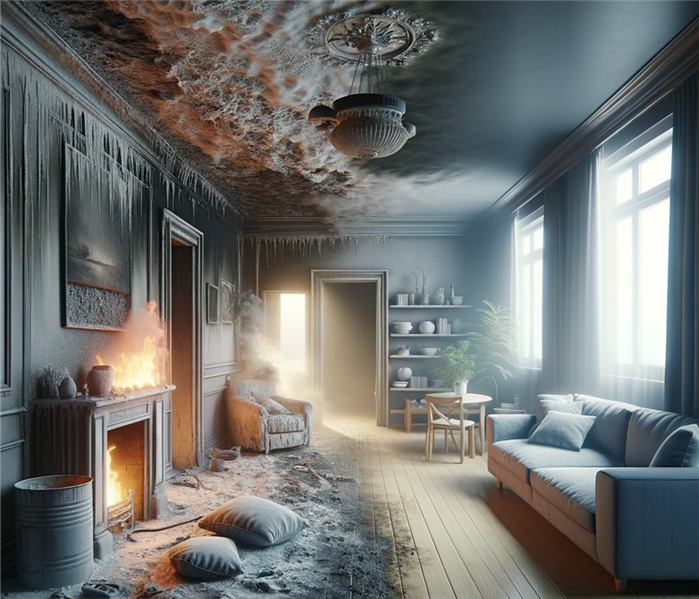 No matter how serious your fire damage may be, SERVPRO of North Atlanta/Buckhead is here to help.
No matter how serious your fire damage may be, SERVPRO of North Atlanta/Buckhead is here to help.
At SERVPRO of North Atlanta/Buckhead, our recent work in Druid Hills, Vinings, and Chastain Park has brought to light the often underestimated impact of smoke and soot after a fire. Beyond the immediate destruction caused by flames, these by-products can continue to harm a property and its occupants. This blog post aims to shed light on the complexities of smoke and soot damage, detailing the health risks, the science behind odor removal, and the specialized cleaning techniques we employ to restore both air quality and property.
The Hidden Hazards of Smoke and Soot
Smoke and soot are pervasive and insidious, settling silently on surfaces and embedding in fabrics. The fine particles of soot, a mixture of acids, chemicals, and dust, can lead to discoloration and a persistent smoky smell. Smoke, with its complex blend of chemical compounds and gases, poses significant health risks, especially to those with respiratory issues, the elderly, and children, causing irritations and potentially more severe health problems.
The Science Behind Odor Removal
Removing the odors associated with smoke and soot is a complex task that goes beyond surface cleaning. At SERVPRO of North Atlanta/Buckhead, we employ advanced techniques like thermal fogging and ozone treatment. Thermal fogging uses a fine mist to penetrate surfaces, neutralizing odors at their source. Ozone treatment, involving ozone generators, breaks down the odor molecules, effectively purifying the air and surfaces.
Specialized Cleaning Processes
In the aftermath of fire incidents in neighborhoods like Druid Hills, Vinings, and Chastain Park, our team is confronted with the challenge of removing smoke and soot residues. This process involves using HEPA vacuums to capture particulate matter, dry sponges for soot, and specialized cleaning solutions for oily residues. Soft furnishings and fabrics often require deep cleaning or special treatments to fully remove odors and residues.
A critical part of the restoration is ensuring the indoor air quality is safe. This includes cleaning HVAC systems to prevent the spread of contaminated air. Our comprehensive approach aims not only to restore the physical structure and contents but also to ensure a healthy living or working environment.
Conclusion
The impact of smoke and soot in the wake of a fire can be as damaging as the fire itself. Understanding and addressing these elements are crucial for effective restoration. At SERVPRO of North Atlanta/Buckhead, we are equipped with the expertise and technology to tackle these challenges, ensuring that your property in Druid Hills, Vinings, or Chastain Park is restored to its pre-fire condition. If you are dealing with the aftermath of a fire, trust in our team to provide a thorough and caring restoration process, helping you move forward "Like it never even happened."
The Dangers of DIY Sewage Cleanup: Why It's Best to Call in the Professionals
5/1/2023 (Permalink)
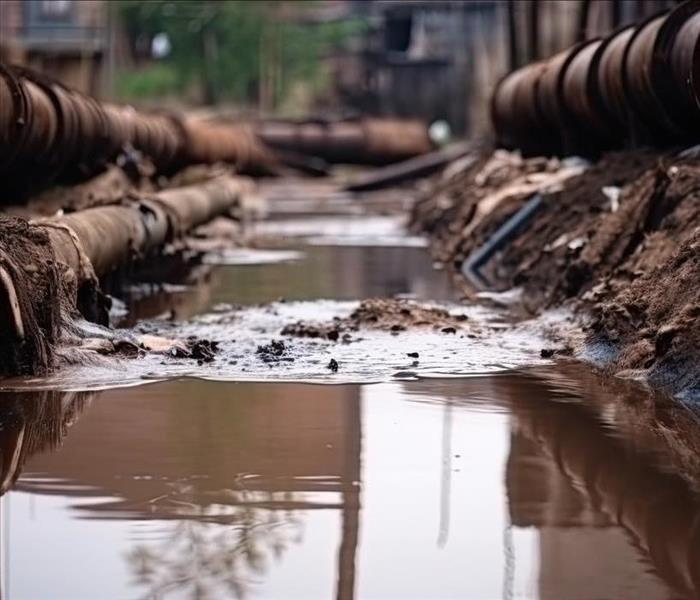 Whether your 1000 sq ft home or 100,000 sq ft commercial building experiences a flood in Atlanta, Buckhead, or nearby areas we're here to help 24/7.
Whether your 1000 sq ft home or 100,000 sq ft commercial building experiences a flood in Atlanta, Buckhead, or nearby areas we're here to help 24/7.
Experiencing a sewage backup in your home or business can be a daunting and overwhelming experience. While it may be tempting to try to tackle the problem yourself to save some money, attempting a DIY sewage cleanup can be hazardous and ultimately, more costly in the long run. In this blog post, we will explore the dangers of attempting to clean up sewage on your own and explain why it's best to call in professionals like SERVPRO of North Atlanta/Buckhead for water damage restoration and sewage cleanup services.
Understanding the Health Risks Associated with DIY Sewage Cleanup
Sewage backups can be both hazardous and potentially deadly when homeowners attempt to address the issue themselves. Sewage can consist of greywater (from utilities like sinks, tubs, showers, and dishwashers) or, even worse, black water, which is the water used to flush toilets mixed with the human waste that it flushes away. Besides human waste, chemical compounds and cleansers in sewage produce phosphorus and nitrogen pollution that can damage waterways and pose serious risks when entering your home. Sewage backups in your home can result from various causes, such as clogs in the home's drain pipes, tree roots, damaged sewer lines, and more.
Sewage contains up to one million microorganisms per millimeter of waste, some of which are vital for breaking down solid waste. However, pathogenic bacteria are also present and can cause health problems such as Hepatitis A and Encephalitis. Due to its ability to seep into porous materials, sewage is challenging to clean up by hand.
Furthermore, sewage contains parasitic microorganisms, such as polio, adenovirus, and enteric cytopathic human orphan (ECHO) viruses, which can cause severe health issues in humans. While the ratio of viruses to bacteria is relatively small, they are still harmful to your health. Wastewater also hosts pathogenic and saprophytic bacteria, including E. coli, Giardia Lamblia, Salmonella, and Pseudomonas aeruginosa. Direct exposure to these toxins can lead to intestinal diseases, typhoid fever, cholera, and dysentery. That is why coming into contact with sewage without wearing personal protective equipment (PPE) and following proper procedures can pose a severe threat to your health.
Mold growth is another significant risk when attempting DIY sewage cleanup. Mold exposure can worsen allergy and asthma symptoms, especially in children and individuals with compromised immune systems. Flooding provides ideal conditions for mold to develop, as it only needs moisture, organic material, and optimal temperature. Alarmingly, mold can grow within just 24 to 48 hours of the incident.
However, the greatest danger is sometimes not the risk of disease, but the risk of electrocution or explosion. Never enter a flooded area or light matches until the utility companies have shut off the electric and gas service. If you detect or smell gas, immediately evacuate your home and notify the gas company. You should also enter your home with caution if you did not turn off the main power switch before the flooding occurred. Touching electrical lines, wires, equipment, and fixtures during and after a flood can be dangerous.
Addressing the underlying plumbing issue is crucial to prevent future sewage backups. Failing to fix the problem correctly can lead to recurring spills and increased costs. It's worth noting that most home insurance policies cover sewage cleanup, so hiring professionals like SERVPRO of North Atlanta/Buckhead is a practical and cost-effective solution.
The Importance of Proper Protective Gear and Equipment in Sewage Cleanup
Handling human waste or sewage comes with an increased risk of illness from waterborne diseases. Anyone involved in sewage cleanup must follow proper hygiene practices and wear appropriate personal protective equipment (PPE) to minimize the risk of contracting diseases such as the ones mentioned earlier in this article. SERVPRO restoration technicians are trained to prioritize health and safety while dealing with sewage cleanup tasks.
Basic Hygiene Practices for Restoration Technicians
- Always wash hands with soap and water after handling human waste or sewage, before eating or drinking, and before and after using the toilet.
- Avoid touching your face, mouth, eyes, nose, or open sores and cuts while handling human waste or sewage.
- Keep open sores, cuts, and wounds covered with clean, dry bandages.
- Use waterproof gloves to prevent cuts and contact with human waste or sewage.
- Wear rubber boots at the worksite and during transport of human waste or sewage.
- Refrain from smoking or chewing tobacco or gum while handling human waste or sewage.
- Gently flush eyes with safe water if human waste or sewage contacts them.
Restoration techs who handle human waste or sewage are always provided with proper PPE, training on how to use it, and handwashing facilities. The following PPE is typically required for restoration technicians handling human waste or sewage:
- Goggles: to protect eyes from splashes of human waste or sewage.
- Protective face mask or splash-proof face shield: to protect nose and mouth from splashes of human waste or sewage.
- Liquid-repellent coveralls: to keep human waste or sewage off clothing.
- Waterproof gloves: to prevent exposure to human waste or sewage.
- Rubber boots: to prevent exposure to human waste or sewage.
To further protect restoration technicians from exposure, employees are typically required to have their Tetanus vaccinations up to date, and in most cases polio, typhoid fever, Hepatitis A, and Hepatitis B vaccinations as well. Adhering to these best practices and procedures ensures the health and safety of workers handling sewage cleanup tasks. That is also why sewage cleanup and related water damage restoration can become more expensive and dangerous for a DIY restorer.
The Role of Industry Standards and Certification in Professional Sewage Cleanup Services
Professional water damage restoration and sewage cleanup companies like SERVPRO of North Atlanta/Buckhead adhere to strict industry standards and guidelines to ensure that their work is effective, safe, and compliant with local regulations. Many restoration companies hold certifications from organizations like the Institute of Inspection, Cleaning and Restoration Certification (IICRC), which sets forth best practices for handling sewage cleanup projects.
The IICRC establishes and promotes globally recognized standards, including the IICRC S500 and IICRC S520, for water damage restoration and mold remediation, respectively. The IICRC S500 focuses on principles of water damage restoration, safety, and health, while the IICRC S520 covers mold remediation and abatement procedures. These standards provide a comprehensive framework for professionals to follow when dealing with sewage cleanup and water damage restoration projects.
By hiring a certified professional, you can be confident that your property will be cleaned and restored according to the highest standards of quality and safety. Certified professionals undergo rigorous training and examinations to demonstrate their competence in adhering to industry standards. Additionally, many professional sewage cleanup companies maintain affiliations with other relevant industry organizations, such as the Restoration Industry Association (RIA) and the Indoor Air Quality Association (IAQA), further ensuring their commitment to upholding best practices.
When you choose a professional sewage cleanup service with IICRC certification and affiliations to relevant industry organizations, you can trust that your property will be restored with the utmost care, professionalism, and adherence to industry guidelines. This not only guarantees the safety and health of those using the property but also provides peace of mind that the cleanup process will be completed with the highest level of expertise. This total peace of mind can be lacking in a DIY sewage cleanup project.
Finding the Right Sewage Cleanup Company: Questions to Ask and Factors to Consider
When looking for a professional sewage cleanup company, it's essential to do your research and ask the right questions. Some factors to consider include:
- Experience and expertise: Look for a company that specializes in water damage restoration and sewage cleanup, with a track record of successful projects.
- Certification and training: Make sure the technicians are trained and certified by reputable industry organizations like the IICRC.
- Insurance and liability coverage: Verify that the company has proper insurance coverage to protect you from potential liability.
- Availability and response time: Choose a company that offers 24/7 emergency services and can respond quickly to your needs.
Attempting a DIY sewage cleanup can be dangerous and may result in long-term damage to your property and health risks for you and your family. Instead, trust the professionals at SERVPRO of North Atlanta/Buckhead for comprehensive water damage restoration and sewage cleanup services. Our certified technicians have the experience, equipment, and expertise to ensure that your home or business is thoroughly cleaned, sanitized, and restored to its pre-damage condition.
By choosing a professional sewage cleanup company like SERVPRO of North Atlanta/Buckhead, you can have peace of mind knowing that your property is in the hands of experienced and certified experts who are committed to delivering the highest quality service.
Don't put your health and property at risk by attempting a DIY sewage cleanup. Call SERVPRO of North Atlanta/Buckhead today at (404) 261-2925 for more information on our water damage restoration and sewage cleanup services. Let our team of restoration professionals help make it "Like it never even happened."
The Role of Dehumidifiers in Water Damage Restoration
2/16/2023 (Permalink)
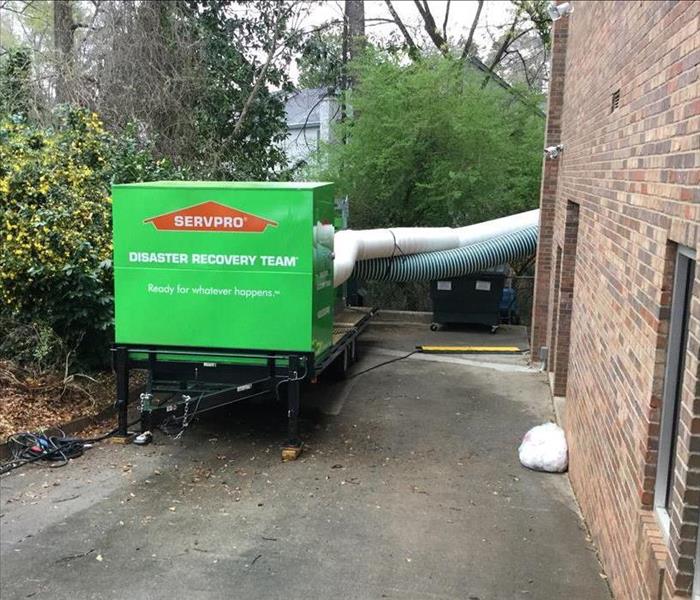 SERVPRO Trailer Mount Dehumidifier at a water damage restoration project in Buckhead, GA
SERVPRO Trailer Mount Dehumidifier at a water damage restoration project in Buckhead, GA
Water damage can be a nightmare for any homeowner or business owner. It can cause extensive damage to the property, and the restoration process can be time-consuming and expensive. However, with the right equipment, such as dehumidifiers, the process can be made much easier and more effective.
What is Water Damage Restoration?
Water damage restoration is the process of restoring a property to its preloss condition after it has been damaged by water. The process involves several steps, including water extraction, drying, and dehumidification. The goal of water damage restoration is to prevent further damage and to restore the property to its preloss condition.
The Role of Dehumidifiers in Water Damage Restoration:
Dehumidifiers are an essential tool in the water damage restoration process. They help to remove excess moisture from the air and prevent the growth of mold and mildew. Dehumidifiers work by pulling in moist air and removing the moisture from it, then blowing out dry air. They can be used in conjunction with air movers and fans to speed up the drying process.
Benefits of Using Dehumidifiers:
Using dehumidifiers in the water damage restoration process has several benefits. Firstly, they help to prevent the growth of mold and mildew, which can cause health problems for occupants of the property. They also help to prevent further damage to the property by removing excess moisture from the air. In addition, dehumidifiers can help to reduce the drying time, which can save time and money in the restoration process.
What are Some Types of Dehumidifiers Used in Water Damage Restoration?
There are several types of dehumidifiers used in property damage restoration. Some common types include:
Refrigerant Dehumidifiers: These dehumidifiers work by cooling the air and removing moisture from it, similar to how an air conditioner works. They are commonly used for residential and commercial applications.
Desiccant Dehumidifiers: These dehumidifiers use a desiccant material, such as silica gel or activated alumina, to absorb moisture from the air. They are commonly used in industrial and commercial settings.
Low Grain Refrigerant (LGR) Dehumidifiers: These dehumidifiers are similar to refrigerant dehumidifiers, but they are designed to handle lower moisture levels and can be more effective at removing moisture from the air.
Ventilation Dehumidifiers: These dehumidifiers work by exchanging moist air for drier air from outside. They are commonly used in areas where there is a lot of outdoor air available, such as in crawl spaces.
The type of dehumidifier used will depend on the specific conditions of the water damage restoration project, such as the size of the affected area, the severity of the damage, and the type of materials affected. That is why our SERVPRO restoration technicians are trained to calculate and install the right type and number of dehumidifiers needed for each specific project.
What is the ideal air moisture level to prevent mold growth or bacterial growth?
The ideal air moisture level in a home to prevent mold growth or bacterial growth is between 30% to 50% relative humidity (RH). High levels of humidity, above 60% RH, can promote the growth of mold, bacteria, and other microorganisms, while low levels of humidity, below 30% RH, can cause dryness and discomfort for occupants. Maintaining the humidity level within the ideal range can help prevent the growth of mold and bacteria, while also providing a comfortable living environment. Using a hygrometer, a tool for measuring humidity, can help homeowners monitor and maintain the ideal humidity level in their homes.
What is the average moisture level difference between the input of air and output of air of a dehumidifier during a water damage restoration project?
The average moisture level difference between the input of air and output of air of a dehumidifier during a water damage restoration project can vary depending on several factors such as the size of the area, the severity of the water damage, and the type of dehumidifier used.
However, as a general guideline, a typical dehumidifier can remove 10-20 pints of water per day from a 500-1000 square feet area. This means that the moisture level difference between the input and output of air of a dehumidifier can be around 10-20 pints of water per day, or around 5-10 liters of water per day.
It is important to note that the actual moisture level difference can vary depending on the specific conditions of the water damage restoration project, and it is best to consult with a professional water damage restoration company like SERVPRO of North Atlanta/Buckhead to determine the appropriate type and number of dehumidifiers needed for the specific project.
Conclusion:
Dehumidifiers play a crucial role in the water damage restoration process. They help to remove excess moisture from the air, prevent the growth of mold and mildew, and reduce the drying time. If you need water damage restoration services, make sure that the company you choose has the necessary equipment, including dehumidifiers, to ensure a quick and effective restoration.
Thankfully, our SERVPRO team has the right equipment for any type of project. So whether your single-family home or multi-story commercial building experiences water damage, our SERVPRO team has the expertise and equipment to get your business restored quickly like it never even happened.
Call us at (404) 261-2925 for 24/7/365 support. We’re always here to help.
What are the hidden damages of a fire loss?
1/4/2023 (Permalink)
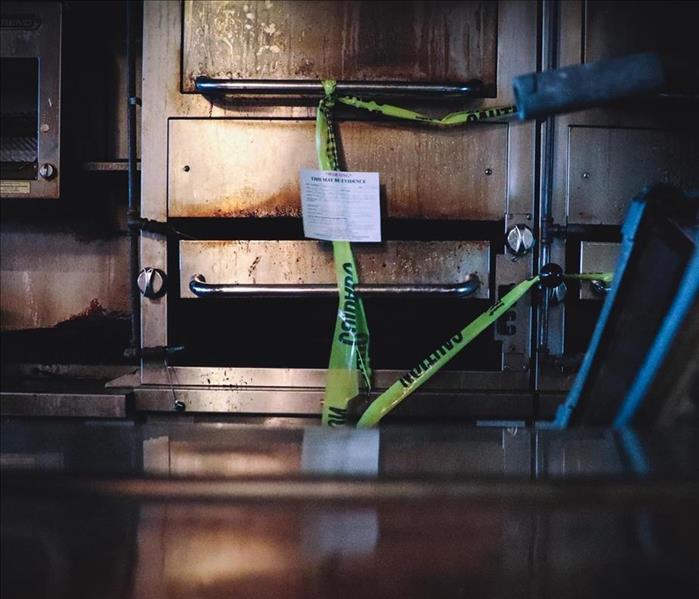 SERVPRO of North Atlanta Buckhead serves all local areas throughout Atlanta, Buckhead, Brookhaven, Sandy Springs and more.
SERVPRO of North Atlanta Buckhead serves all local areas throughout Atlanta, Buckhead, Brookhaven, Sandy Springs and more.
Smoke & Soot Damage
There’s more to fire damage than meets the eye. In addition to the visible destruction caused by flames, fire can also cause hidden damages that can be hard to detect. The two main culprits of these hidden damages are smoke and soot damage, and water damage. Understanding these additional impacts on your property, and how to take care of them, can help ensure that you are reimbursed appropriately for your insurance claim.
One of the primary hidden damages of a fire loss is smoke and soot damage. Smoke and soot can cause a variety of issues, including:
- An unpleasant odor that can linger in the air and on surfaces
- Stained fabric and upholstery
- Discoloration of paint
- Rust, pitting, and corrosion of metal objects such as piping and jewelry
- Damage to flooring
It is important to address smoke and soot damage as soon as possible, as it can have long-term effects on both your health and your property. Inhaling or coming into contact with smoke and soot can cause respiratory issues, including bronchitis and asthma, and can even lead to more serious health problems such as stroke, heart attack, and cancer. Smoke and soot can also linger on surfaces and inside electronics and appliances, making it difficult to remove and contributing to further property and contents damage. To properly address smoke and soot damage, it is best to hire a professional cleaning and fire damage restoration service like SERVPRO of North Atlanta/ Buckhead.
Water Damage After a Fire
Water damage is another common hidden damage that can occur as a result of a fire. While firefighters may use large amounts of water to extinguish the flames, this can also result in significant water damage to your property. Water damage can cause structural issues, damage to electronic devices and appliances, and harm to furniture and important documents. If left unaddressed, water damage can also lead to the growth of mold, which releases spores into the air. To properly address water damage, it is best to hire a professional emergency restoration service. Most homeowners insurance policies will cover the cost of remedying mold when it is the result of a covered cause of loss.
If you have experienced a fire loss, it is important to have someone on your side to help you navigate the insurance claims process. An experienced fire damage restoration team like SERVPRO of North Atlanta/ Buckhead can make sure your home or business is fully restored properly while following your insurance company's processes to ensure nothing is left behind.
What are the next steps to take after experiencing a fire loss?
If you have experienced a fire loss, there are several steps you should take to ensure that you are properly compensated by your insurance company. These include:
- Documenting the damages: Take photos and make a list of all the damages to your property, including any hidden damages.
- Contacting your insurance company: Report the fire loss to your insurance company as soon as possible.
- Seeking professional help: Hire a professional fire damage restoration service to address smoke and soot damage and an emergency restoration service to address water damage.
- Considering hiring a public adjuster: A public adjuster can help you navigate the insurance claims process and ensure that you receive the maximum settlement for your claim.
Dealing with the aftermath of a fire loss can be overwhelming, but understanding the full extent of the damages and taking the necessary steps can ensure a complete fire damage restoration in your home or business.
Thankfully, our SERVPRO of North Atlanta/ Buckhead team is here to help. No matter how severe your fire damage may be, our experienced crew of restoration technicians uses cutting-edge techniques and equipment to restore fire damage "Like it never even happened." So whether your fire damage occurred in Atlanta, Buckhead, Brookhaven, or Sandy Springs, call our team today!
Tips to Prevent Frozen Water Pipes in Your Home
1/2/2023 (Permalink)
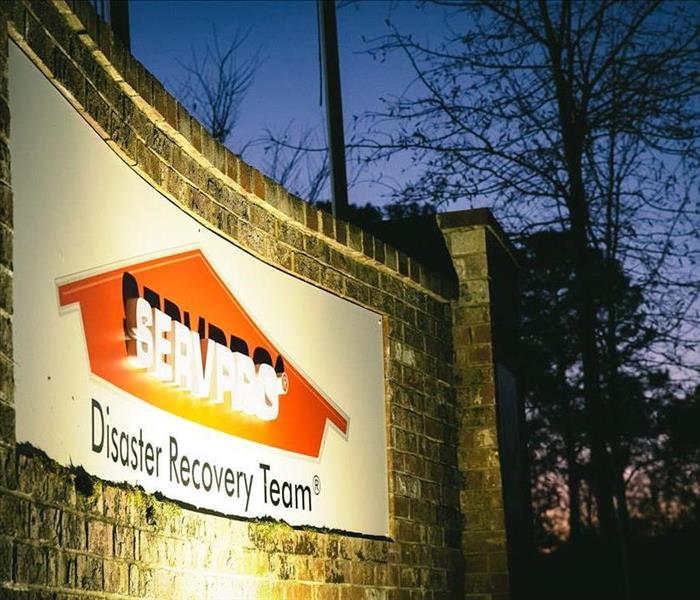 SERVPRO Team Bisig is here to help if you experience any kind of water damage from frozen pipes in your home or business in or near Atlanta, Georgia.
SERVPRO Team Bisig is here to help if you experience any kind of water damage from frozen pipes in your home or business in or near Atlanta, Georgia.
As the winter season approaches, it's important to be proactive in preventing frozen water pipes in your home. Frozen pipes not only disrupt your water supply, but they can also lead to costly water damage and the need for water damage restoration services.
Here are some tips for preventing frozen pipes in your home:
Insulate your pipes: Exposed pipes are more likely to freeze, so be sure to insulate any pipes that are located in unheated areas of your home, such as the attic, basement, or garage. You can use pipe insulation sleeves, heat tape, or foam pipe insulation to protect your pipes.
Keep your thermostat set to the same temperature day and night: By keeping your thermostat at a consistent temperature, you can help prevent your pipes from freezing.
Allow a slow trickle of water to flow: When the temperature dips below freezing, allow a slow trickle of water to flow from your faucets. This can help prevent your pipes from freezing and bursting.
Keep your garage door closed: If you have pipes in your garage, be sure to keep the garage door closed to keep the area warm.
Disconnect your garden hoses: Before the winter season arrives, be sure to disconnect your garden hoses and store them in a safe place. If water is left in the hose, it can freeze and cause your outdoor faucets to burst.
Seal any drafts: Check for drafts around your windows and doors and seal any gaps to keep the cold air out.
By following these prevention tips, you can help protect your home from the costly damage caused by frozen pipes. However, if you do experience a pipe burst, it's important to quickly address the issue and call a professional water damage restoration company to properly assess the damage and restore your home. Don't hesitate to contact a water damage restoration company if you suspect that your pipes have burst or if you notice any signs of water damage in your home.
In conclusion, taking steps to prevent frozen pipes in your home is essential to avoiding the need for water damage restoration services. By insulating your pipes, keeping your thermostat consistent, allowing a slow trickle of water to flow, closing your garage door, disconnecting your garden hoses, and sealing any drafts, you can help protect your home from the costly damage caused by frozen pipes.
Commercial Systems Prone to Water Damage: SERVPRO of North Atlanta
4/28/2022 (Permalink)
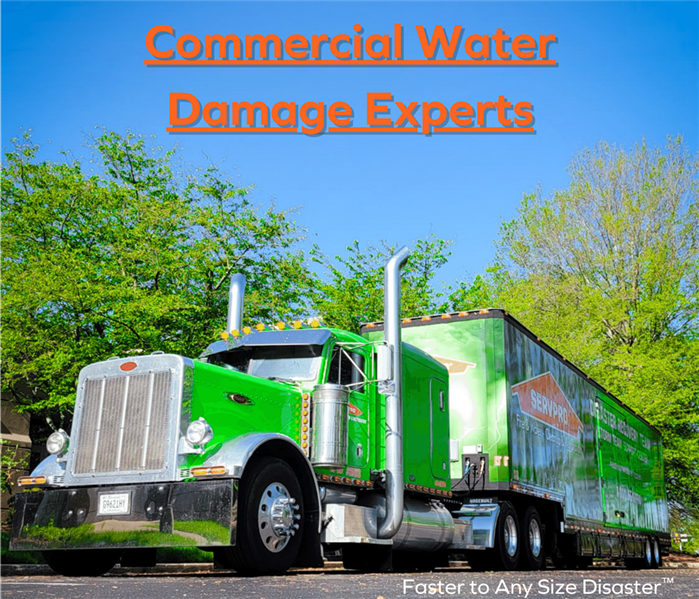 SERVPRO of North Atlanta is ready for whatever happens! We'll restore your business after any size of property damage.
SERVPRO of North Atlanta is ready for whatever happens! We'll restore your business after any size of property damage.
Commercial properties present unique risks when it comes to water damage. Unlike residential homes, which are usually one story and have easily accessible crawl spaces and attics, commercial buildings can be many stories high with flat roofs and multiple storefront windows. They also often have expensive specialized equipment that can be very costly to repair or replace if damaged by water. In this blog post, we will discuss the different parts of a commercial building that are at risk for water damage, as well as some tips on how to prevent it.
Plumbing Systems
The first and most obvious risk for water damage in a commercial property is the plumbing system. Because commercial buildings have more bathrooms, kitchens, and other water-using fixtures, they also have larger and more complex plumbing systems. These systems are often located in hard-to-reach places, making them difficult to repair if they spring a leak.
One of the main water damage challenges according to The Hartford Insurance is an improperly maintained sprinkler system. By law, most commercial buildings must have a fire sprinkler system, but many building owners forget to regularly maintain and test these systems. While a well-maintained fire sprinkler system can help prevent extensive fire damage in the event of a fire, improper maintenance or disaster planning can cause extensive water damage that can flood multiple floors.
Another plumbing risk is burst pipes. Commercial buildings, especially high rises tend to run at a higher pressure than residential buildings. Therefore, a burst pipe has the potential to release significantly more water than a home.
One of the ways in which we help commercial property owners prevent catastrophic property damage before it happens is through our app-based Emergency Response Planning program (ERP).
Roofing Systems
In addition to the plumbing system, there are a number of exterior commercial building components that can experience water damage. One of the most common is the flat roof. Because flat roofs are not sloped like traditional pitched roofs, they tend to pool water instead of shedding it. This can lead to leaks and eventually, if left unaddressed, major water damage.
Some common commercial roofing systems include:
- Built-up Roofing (BUR): Often called tar and gravel roofs, these commercial roofing systems are built with a semi-continuous membrane installed in layers, then covered in aggregate. While they are usually simple to maintain, best practices suggest inspecting the roof for deterioration and possible leak points at least twice yearly.
- Thermoplastic Single-Ply Membrane Roofing (PVC & TPO): These roofs are installed in large rolls that are then welded together at the seams with heat. The material is very durable and oil-resistant. However, the heat-welding methods require skilled installation, which can lead to weak points and leak-prone areas if not performed correctly.
- EPDM Roofing: Some roofers call these "rubber roofs" because the material they are made of, ethylene propylene diene monomer is very rubber-like. This kind of roof is derived from oil and natural gas, and appears dark gray or black. When installed correctly and with the highest thickness available, this type of commercial roof will last a very long time with little to no issues. Unless you experience storm damage in your area, an annual check for leaks around the roof penetrations should suffice.
Window Systems
Commercial window systems are built for durability and use, however, they can often present a unique water damage challenge for commercial facilities. Most aluminum glazing systems aren't intended to be 100% waterproof. Most commercial window systems are meant to limit water penetration during extreme circumstances while also weeping water back out to the exterior.
By directing all moisture to the sill flashing, storefront systems limit water penetration. It's critical that the sill flashing be installed correctly in order to avoid water damage. Making sure that sealant is put on the top of the rear leg before installing the sill is one of the most important aspects of a good installation.
The most essential aspect of maintaining water penetration with a storefront is end dam fastening and sealing. Water will enter the building through the jamb locations if end dams are not properly fastened and sealed. Improperly (or missing) end dams can cause significant water damage to the interior drywall or flooring around commercial storefront windows.
Like anything else in a building, time and the elements can cause wear and tear and failure of these commercial window water control systems.
Commercial Water Damage Inspection Services
So if you notice moisture or water damage around your storefront windows, you should consider calling SERVPRO of North Atlanta to inspect for potential water damage issues. Our technicians are trained to identify, troubleshoot, and restore all types of commercial water issues.
Call today to schedule your commercial service!
(404) 261-2925
How to Respond to a House Fire: The Most Effective Strategies
3/28/2022 (Permalink)
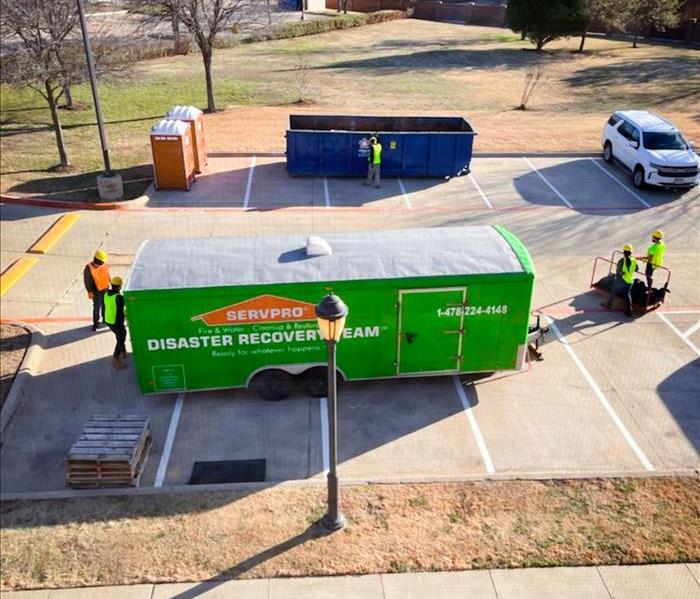 No matter how serious the property damage is, SERVPRO of North Atlanta/Buckhead has the crew and the expertise to restore your home after a fire.
No matter how serious the property damage is, SERVPRO of North Atlanta/Buckhead has the crew and the expertise to restore your home after a fire.
It's that time of year again - fire season. Between the months of February and May, the weather gets hotter and drier, while the risk of house fires goes up. A fire can start from any number of sources: a faulty wire, an overloaded outlet, a kitchen accident, or a bonfire left unattended. If your home catches fire, it's important to know how to respond quickly and effectively. In this blog post, we will discuss the most effective strategies for responding to a house fire. Stay safe!
If a Fire Starts, Here Is What You Need To Know:
The first line of defense against a fire is to know how to safely use the right fire extinguisher for a house fire. This simple step can save lives and tens of thousands in property damages. If the fire loses control, immediately get out and stay out, then call 9-1-1. Leave all your things where they are and save yourself.
If your clothing catches on fire, remember the old phrase: Stop, Drop, and Roll.
If you live in a building with elevators, it is important to use the stairs in case of a fire. A fire can short out the elevator electrical system, and the shaft can act like a chimney and rapidly fill up with dangerous smoke.
Understanding how to use doors to your advantage during a fire can mean the difference between life and death. If the door or handle is warm, do not open it. If you can't escape through the primary way, find another way out. Do not open any doors that are warm to the touch.
If some, heat, or flames block your exits, close any doors around you, place a wet towel under the doors and call the fire department or 9-1-1. Tell them exactly where you are so they know where to find you.
If you're near a window that you can't use as an escape, open it and wave a brightly colored cloth or use your phone flashlight to signal for help.
What To Do After a Fire
After a fire, it is important to contact a professional fire damage restoration company like SERVPRO of North Atlanta. We have the training, experience, and equipment to properly restore your home - "Like it never even happened."
If you try to clean up the fire damage yourself, you could end up making the situation worse both in your home and with your insurance company's process.
Trust the experts, and call today!
Spring Weather to Watch Out For In Georgia | SERVPRO® of North Atlanta/Buckhead
3/25/2022 (Permalink)
 Extreme temperature changes can lead to severe weather. SERVPRO of North Atlanta/Buckhead is just a phone call away if you need immediate assistance.
Extreme temperature changes can lead to severe weather. SERVPRO of North Atlanta/Buckhead is just a phone call away if you need immediate assistance.
The United States is a big country. It's the third largest in the world, after Russia and Canada. But if you don't count all of the US territories, China is bigger.
The USA has many different areas, each with their own weather. The weather can be very different from one area to the next. Each area faces different weather threats throughout the year.
In the spring, you can expect different weather in different parts of the country. In Georgia, we need to be aware of what will happen when two warm and cold air masses meet.
The Pacific Northwest is known for a lot of rainfall during the spring. This can cause floods and water damage to houses. Snowfall will continue at higher elevations, and the melting and runoff from that will bring new concerns of their own.
The Upper Midwest and Northeast have the longest winters. The temperatures stay cold for a long time. People in these parts of the country can expect snowstorms and blizzards throughout late spring or early summer in places from Maine to South Dakota, when temperatures start to rise.
Residents of the southern West Coast should be wary of intense heat waves. They should also be aware of possible safety concerns and tsunamis on Hawaii's South Pacific coast. This is because of tectonic activity.
The heartland of America (Iowa to Texas) is a region that will be affected by many different types of storms. These storms can include tornadoes, droughts, and wild fires. These events can be dangerous and cause a lot of property damage.
Extreme weather is a big concern in the Southeast, especially in Georgia. This includes tornadoes and severe thunderstorms in landlocked states, as well as hazardous rip currents on the coast and hurricanes during the spring. Georgia is often affected by thunderstorms and tornadoes in the spring and summer. These are often caused by remnants of tropical storms that have crossed the sea.
No matter where you live in the United States, it is always important to be prepared for the weather. Your state might have different weather than your friend's state, but you should always be ready for anything.
Luckily, help is only a phone call away if extreme weather causes you to suffer property damage from water, fire, or other agents. For prompt and professional restoration, contact SERVPRO of North Atlanta/Buckhead.




 24/7 Emergency Service
24/7 Emergency Service
